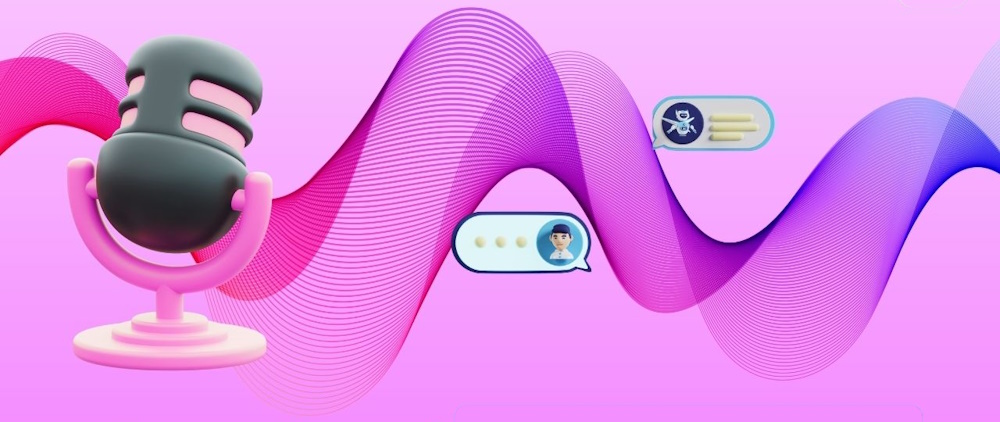 AI Audio Generators
AI Audio Generators
AI audio generators are rapidly transforming how we create and utilize voiceovers, audiobooks, podcasts, and more
Related: AI Avatars AI Image Generators AI Music Generators AI Video Generators
AI audio generators are revolutionizing content creation by providing tools that produce high-quality voiceovers quickly and efficiently. With features such as multilingual support, real-time voice cloning, and extensive customization options, these tools cater to a wide range of applications in marketing, education, entertainment, and more. Whether you're a content creator or a business looking to enhance your communication strategies, these AI-powered solutions offer valuable resources to elevate your audio production capabilities.

 Key Products
Key Products
Murf AI offers a versatile text-to-speech service with over 120
realistic voices in 20+ languages. It allows users to create professional
voiceovers quickly and easily.
Features: Advanced voice synthesis that captures nuances of human speech.
Customization options for pitch, speed, pauses, and background music. Ideal for
content creators looking to enhance their projects with lifelike audio.
Use Cases: Suitable for videos, presentations, and any content requiring
high-quality voiceovers.
Canva provides an AI voice generator that allows users to convert text
into speech for various applications like ads, podcasts, and promotional videos.
Features: Access to over 120 AI voices in multiple languages. Customization
options for speed, pitch, emotion, and tonality. Seamless integration with
Canva's design tools for cohesive multimedia projects.
Use Cases: Great for enhancing visual content with engaging audio.
LOVO is an award-winning AI voice generator featuring over 500 voices
in 100 languages. It provides tools for creating engaging videos with realistic
voiceovers.
Features: Real-time voice cloning capabilities. An online video editor
integrated with the voice generation tool. Customizable voices that can be
tailored to specific branding needs. Use Cases: Perfect for marketing, training
videos, social media content, and more.
Narakeet offers an online AI voice generator with 700 realistic voices
in 100 languages. It is user-friendly and requires no registration for basic
use.
Features: Batch processing capabilities for creating multiple audio files
simultaneously. Supports various formats and customization options for voice
speed and volume.
Use Cases: Ideal for e-learning content, IVR systems, and multilingual projects.
Resemble AI provides a platform for creating hyper-realistic AI voices
through text-to-speech and speech-to-speech technologies.
Features: Rapid voice cloning with minimal input data (just 10 seconds of
audio). Multilingual support across over 149 languages. Options for self-hosting
to maintain control over data security.
Use Cases: Suitable for podcasts, audiobooks, video games, and personalized
applications.
Speechify is a free AI voice generator that offers over 200 lifelike
voices across more than 60 languages. It includes features like emotional
control and voice cloning.
Features: Pronunciation library to enhance speech accuracy. One-click export
functionality to save audio files easily.
Use Cases: Useful for audiobooks, educational content, dubbing videos, and
website accessibility.
 How to Use an AI Audio Generator
How to Use an AI Audio Generator
Creating audio using AI voice generators can be a straightforward process. Here's a step-by-step guide on how to use these tools effectively. Using an AI audio generator can greatly enhance your content creation process by providing high-quality voiceovers quickly and easily. By following these steps, you can effectively generate engaging audio for videos, presentations, podcasts, and more while leveraging the powerful capabilities of modern AI technologies.
Step 1: Choose Your AI Voice Generator
Select an AI voice generator that fits your needs. Some popular options include:
- Murf AI: Known for its realistic voices and customization features.
- PlayHT: Offers a variety of synthetic voices and voice cloning capabilities.
- Eleven Labs: Specializes in voice cloning and high-quality audio generation.
Step 2: Sign Up or Log In
Create an account on the chosen platform. Most services offer free trials or limited free versions that allow you to test their features.
Step 3: Prepare Your Script
Write or gather the text you want the AI to convert into speech. For your first attempt, keep it concise (around 100-200 words) to ensure clarity and ease of testing.
Step 4: Import or Paste Your Text
Open the AI voice generator and find the text input field. Paste your script into this area. Ensure that it is formatted correctly, with proper punctuation to guide the pacing of the speech.
Step 5: Select Your Voice
Browse through the available voices. Many platforms offer options in different languages, genders, and accents. Choose a voice that matches the tone you want for your project (e.g., professional, friendly, dramatic).
Step 6: Adjust Settings (If Available)
Depending on the tool, you may have options to adjust pitch, speed, tone, and pauses. Use these features to personalize the audio output. For example, Murf AI allows you to modify aspects like emphasis on specific words and overall speaking style.
Step 7: Preview Your Voiceover
Most platforms allow you to listen to a preview of your generated audio before finalizing it. Play the audio to check if it meets your expectations. If necessary, make adjustments to the voice selection or settings.
Step 8: Generate and Download
Once satisfied with your settings and preview, click the "Generate" or "Create" button to produce the final voiceover. This process typically takes only a few seconds. After generation, download the audio file in your preferred format (e.g., MP3, WAV).
Step 9: Review and Refine
Listen to the final audio file and note any areas for improvement, such as pacing or pronunciation. If needed, make small tweaks in the text or settings and regenerate the voiceover.
Additional Tips
- Experiment with Different Voices: Try out various voices and settings to find what works best for your project.
- Use Voice Cloning Features: If available, consider using voice cloning capabilities to create a personalized voice based on your own recordings.
- Explore Advanced Features: As you become more familiar with the tool, explore advanced features like emotional tone adjustments or background music integration.
 Links
Links
listening.com/blog/ai-voice-generator/
synthesia.io/features/ai-voice-generator
elegantthemes.com/blog/business/how-to-make-an-ai-voice
 Videos
Videos
youtube.com/watch?v=ddqosIpR2Mk
youtube.com/watch?v=ylLwqY1_e_k
youtube.com/watch?v=EQ3IYVbyVmc